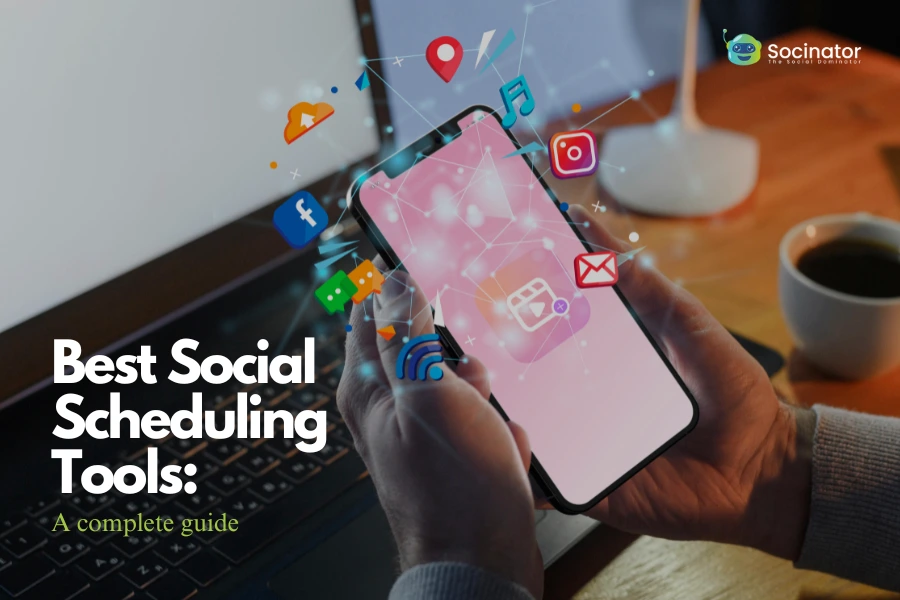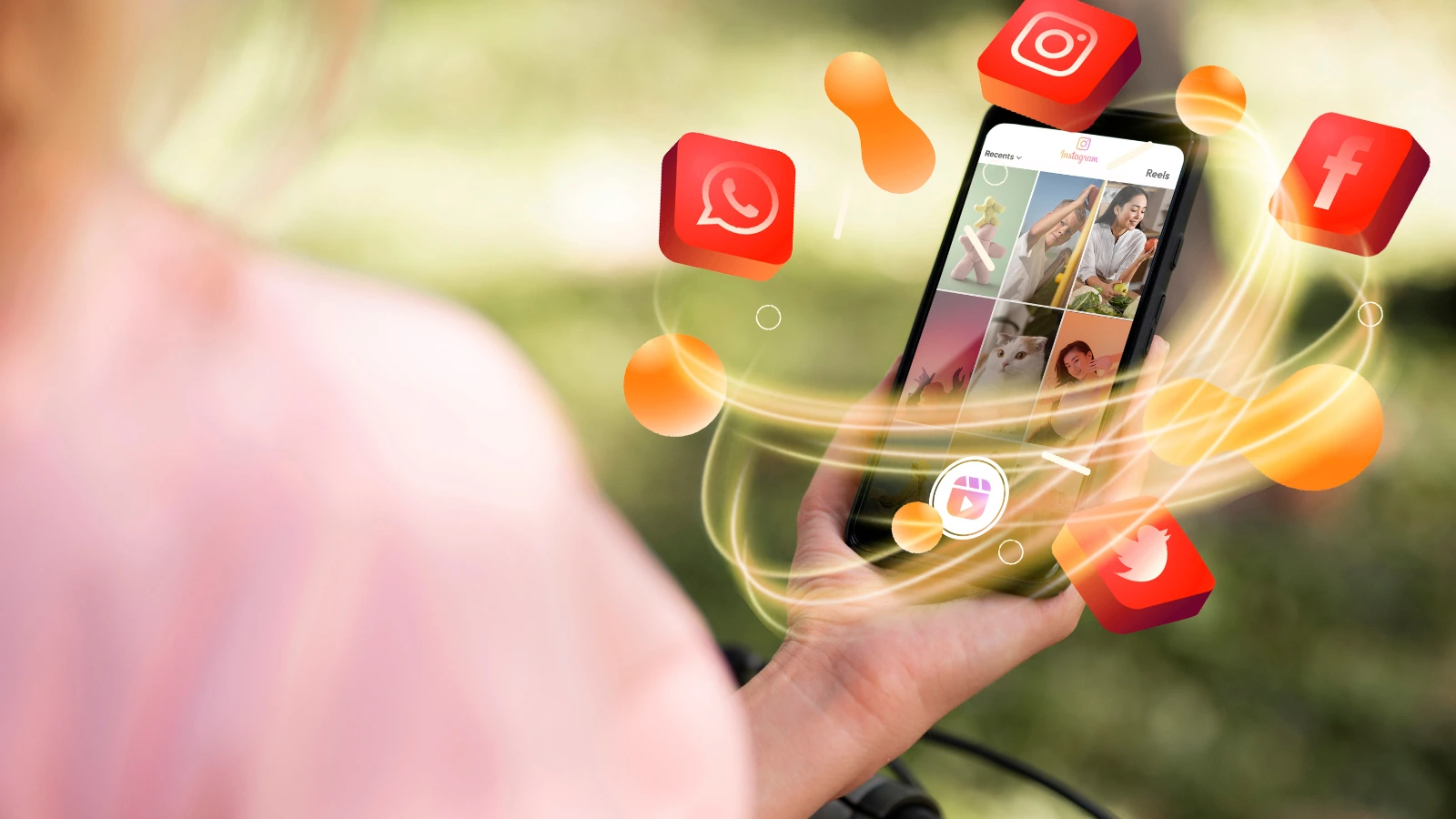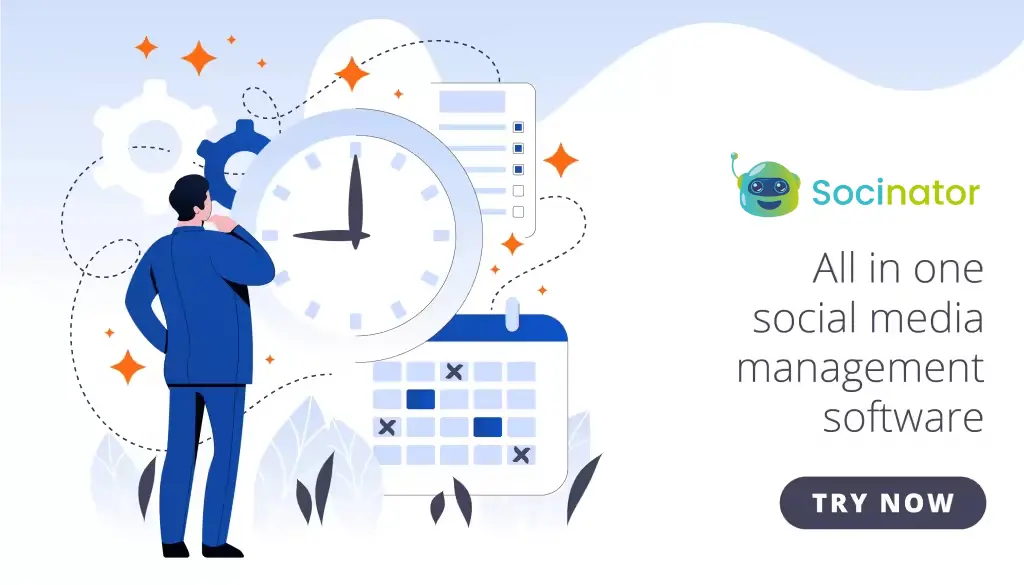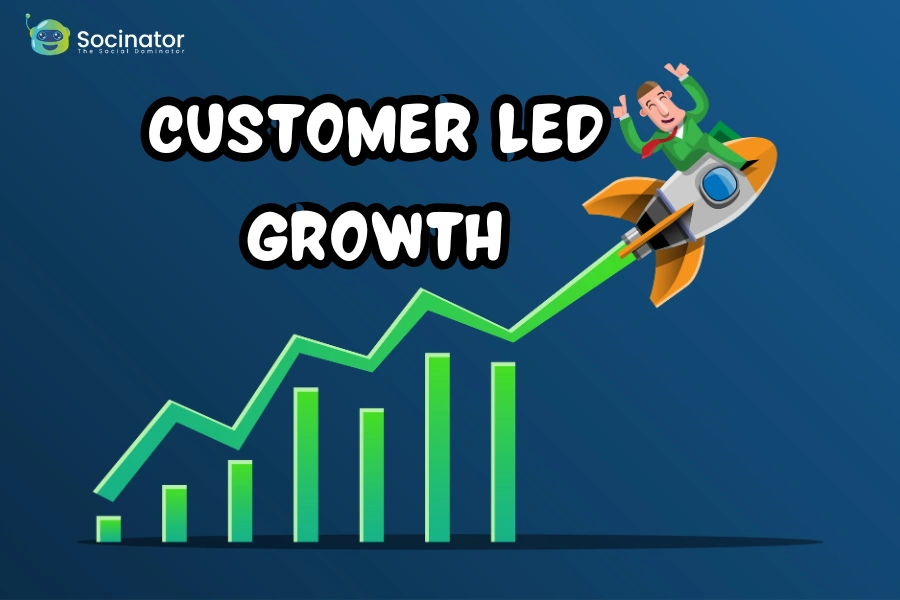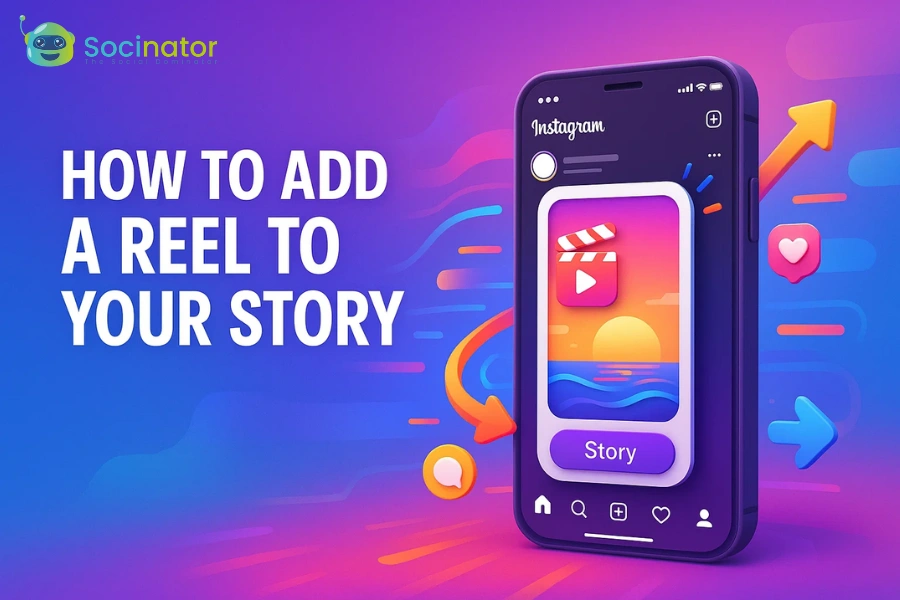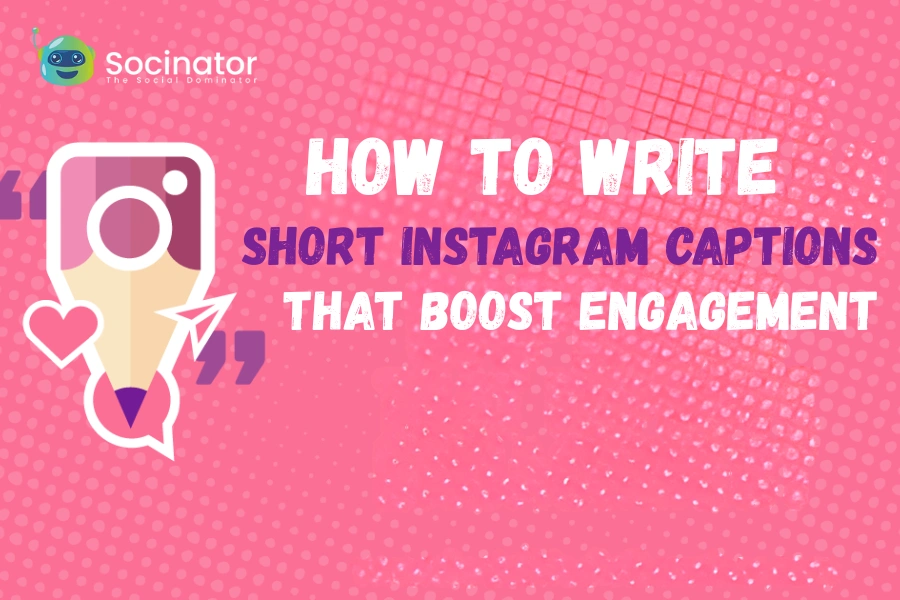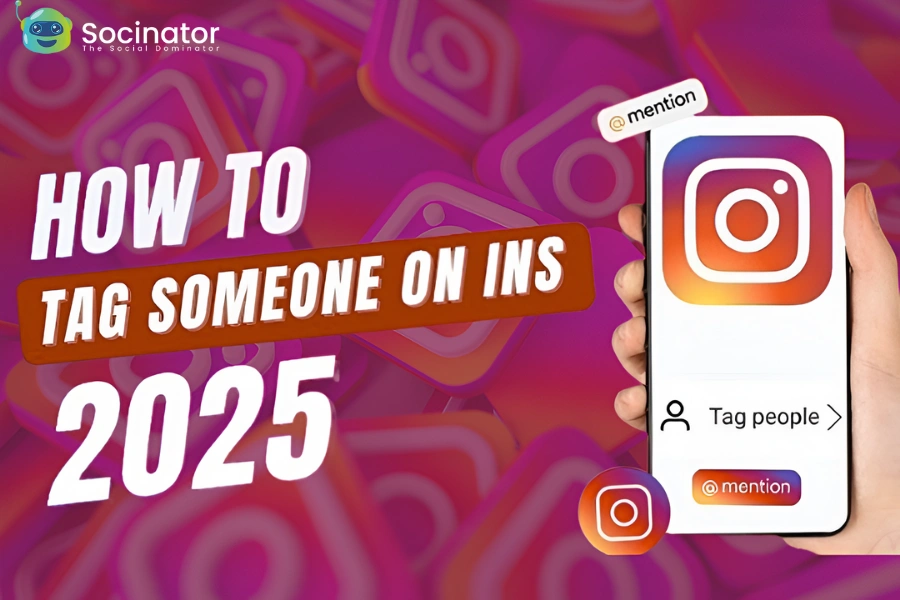Social media management has evolved over the years, and now, it’s all about efficiency and automation. Whether you are a business, a marketer, or a content creator, juggling multiple social media accounts can be overwhelming. The need for advanced social scheduling tools has never been greater. These tools ensure that you maintain consistency in your online presence without having to spend hours manually posting content.
But with so many tools out there, how do you choose the right one for your needs? In this guide, we’ll dive deep into the world of social scheduling tools, focusing on the best features, tips for maximizing your strategy, and why automation is essential for growth.
In a hurry? Listen to the blog instead!
What are Social Media Scheduling Tools?
Social scheduling tools are software that allows users to plan, create, and automate their social media posts across various platforms. These tools help save time, maintain consistency, and ensure that your content reaches your audience at optimal times. They typically offer features like content calendars, analytics, and engagement tracking, enabling users to manage their social media presence effectively.
Why Do You Need Social Scheduling Tools?
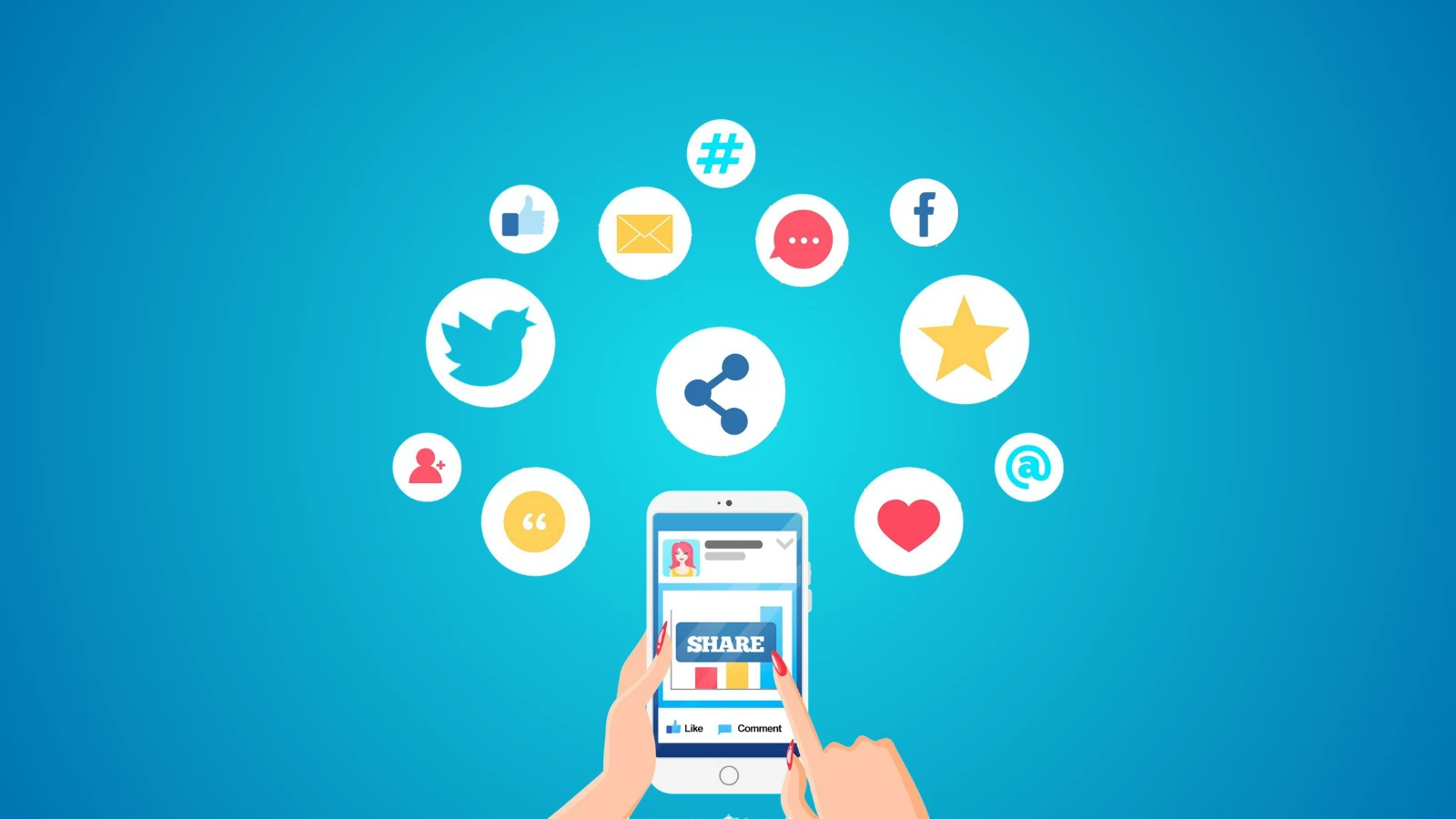 Using social scheduling tools offers numerous benefits that can significantly enhance your social media strategy. Here are some compelling reasons why you need social scheduling tools in your workflow:
Using social scheduling tools offers numerous benefits that can significantly enhance your social media strategy. Here are some compelling reasons why you need social scheduling tools in your workflow:
- Time Savings: Scheduling posts in advance can free up valuable time, allowing you to focus on other important aspects of your business. Instead of spending time each day crafting posts, you can plan your content in bulk and schedule it for optimal posting times.
- Consistency: Regularly posting content helps maintain your audience’s engagement and keeps your brand top of mind. Social scheduling tools enable you to create a posting calendar, ensuring that you consistently share valuable content with your followers.
- Improved Engagement: By analyzing performance metrics, you can tailor your content to better resonate with your audience, leading to increased engagement. Scheduling tools provide insights that help you understand what types of posts are performing well, allowing you to refine your strategy.
- Stress Reduction: Automating posts can reduce the stress of last-minute scheduling and help maintain a balanced content calendar. This allows you to maintain a steady flow of content, reducing the pressure of daily posting. A notable tool like Socinator makes this process effortless, offering features that automate your social media calendar, ensuring that your content is always shared at the right time.
Try Now!
- Optimized Posting Times: Many scheduling tools analyze engagement data to recommend the best times to post based on when your audience is most active. This guarantees that your content reaches the largest possible audience.
- Content Planning and Organization: With a content planning tool, you can plan your content themes in advance and organize your posts accordingly. This strategic approach helps maintain a cohesive brand message across all platforms.
How to Choose the Best Social Scheduling Tool
 Choosing the right social scheduling tool for your needs is crucial for maximizing your social media strategy. With numerous options available, it can be overwhelming to determine which tool aligns best with your goals. Here are essential factors to consider when selecting the best social media scheduler:
Choosing the right social scheduling tool for your needs is crucial for maximizing your social media strategy. With numerous options available, it can be overwhelming to determine which tool aligns best with your goals. Here are essential factors to consider when selecting the best social media scheduler:
1. Identify Your Needs and Goals
- Assess Your Objectives: Are you looking to increase engagement, manage multiple accounts, or streamline your content creation process? Clearly articulating your objectives will assist you in narrowing your choices.
- Evaluate Your Audience: Consider the demographics of your audience and which platforms they frequent. Some tools specialize in specific networks, like Instagram or TikTok.
2. Evaluate Features and Functionality
- Content Calendar: Look for tools that offer a visual content calendar to plan and organize your posts effectively. A well-structured calendar helps maintain a consistent posting schedule.
- Analytics and Reporting: Choose a tool that provides detailed analytics on post-performance, audience engagement, and reach. This data is vital for refining your strategy.
- Multi-Platform Support: When choosing a social scheduling tool, make sure it supports all the platforms you’re active on. The best tools to schedule Instagram Reels, for instance, often also allow posting on other platforms like Facebook, Twitter, and LinkedIn. A versatile tool like Socinator can handle scheduling across multiple channels, making it easier to keep your content consistent and maximize engagement.
Why Socinator is the Ultimate Social Scheduling Tool?
Socinator stands out as a top choice for streamlining your scheduling, serving as a powerful social media content planner to enhance your overall social media management. Whether you’re a business owner, marketer, or content creator, Socinator offers powerful features to save time, boost engagement, and optimize your social presence across multiple platforms.
Here’s why Socinator should be your go-to social scheduling tool:
- Multi-Platform Support
Socinator supports platforms like Facebook, Instagram, Twitter, LinkedIn, YouTube, and Pinterest. With all your social accounts in one place, you can easily maintain a cohesive presence across channels.
- Automated Scheduling and Posting
It allows you to schedule your posts ahead of time to connect with your audience at optimal times. Also, Socinator’s automation features allow you to bulk upload content, freeing up time for other important tasks.
- Smart Analytics
You can also keep track of key metrics like engagement, reach, and follower growth on social media with Socinator’s in-depth analytics. These insights help you fine-tune your strategy and create content that resonates with your audience.
- Engagement Features
Socinator goes beyond scheduling by offering advanced social media automation features, like automating responses to comments, messages, likes, and follows, helping you stay engaged without manual effort.
- User-Friendly Interface
Designed with simplicity in mind, Socinator is easy to navigate for beginners. Its intuitive layout ensures that users can quickly locate and use the features they need, making social media management more efficient and stress-free.
- Affordable Pricing
Socinator offers flexible plans that cater to all types of businesses, making it a cost-effective solution without compromising on essential features.
You not only get a top-tier scheduling tool but also an all-encompassing solution that covers content planning, audience engagement, and performance tracking by choosing Socinator.
3. User Experience and Interface
- Ease of Use: A user-friendly interface is essential, especially if you’re new to social media management. Look for tools that offer intuitive navigation and straightforward functionalities.
- Mobile Compatibility: Consider whether the scheduling tool has a mobile app for managing your content on the go. This feature is especially helpful for those who travel frequently or work remotely.
4. Integration Capabilities
- Connect with Other Tools: Check if the scheduling tool integrates with your existing marketing tools, such as CRM systems, email marketing software, or content creation platforms. This integration can streamline your workflow and enhance productivity.
5. Pricing and Budget
- Cost-Effectiveness: Compare the pricing plans of various tools. Some offer free trials or basic plans, while others may require a subscription. Determine which features are essential for your strategy and find a tool that fits your budget.
- Hidden Fees: Be aware of any additional costs, such as extra fees for premium features, additional user accounts, or exceeding post limits.
6. Customization and Branding Options
- Personalization: Look for tools that allow you to customize posts, including branding elements like logos, colors, and templates. This feature can enhance your brand’s visibility across social platforms.
- Post Scheduling Options: Check if the tool allows flexible scheduling options, such as scheduling posts for specific times, automating recurring posts, or even bulk uploading content.
7. Customer Support and Resources
- Available Support: Consider the level of customer support provided by the scheduling tool. Access to live chat, email support, or comprehensive knowledge bases can be invaluable when troubleshooting issues.
- Educational Resources: Look for tools that offer tutorials, webinars, or community forums. These resources can help you maximize the tool’s potential and keep you updated on best practices.
8. Trial Period and Reviews
- Test Before You Commit: Take advantage of free trials to test different tools before making a decision. This hands-on experience allows you to assess how well a tool meets your needs.
- Read User Reviews: Look for reviews from other users to understand their experiences. Feedback on usability, customer support, and effectiveness can provide insights into the tool’s strengths and weaknesses.
Best Practices for Using Social Scheduling Tools
To maximize the effectiveness of your social scheduling tools, follow these best practices:
1. Create a Content Calendar
A content calendar is essential for crafting an effective social media posting schedule that aligns with your brand’s goals and themes. It allows you to plan campaigns, organize special dates, and ensure a cohesive brand message across all platforms.
2. Test and Optimize Posting Times
Every audience is different, and optimal posting times can vary by platform and demographic. Experiment with different times and analyze the engagement to find the best posting schedule for your target audience.
3. Diversify Content Types
Mix up your content by including images, videos, stories, and polls. This keeps your audience engaged and interested in what you have to say. Use the analytics from your social media scheduler to see which content types perform best.
4. Engage with Your Audience
While automation is helpful, ensure you engage with your audience in real time. Respond to comments, handle questions, and participate in discussions. This human element is crucial for building a loyal community.
5. Review Analytics Regularly
Regularly check the analytics provided by your scheduling tool. Look for trends, successful posts, and areas for improvement. Utilize this information to enhance your content strategy and posting timetable.
Also Read: –
9 Reasons Why To Use Social Media Scheduling Tool To Manage Multiple Social Media Accounts
The Ultimate Guide To Craft A Social Media Posting Schedule
Top 7 Content Planning Tools For Successful Marketing In 2024Importance Of Using An Ad Spy Tool
Common Mistakes to Avoid with Social Scheduling Tools
While social scheduling tools can elevate your social media strategy, several common mistakes can hinder their effectiveness. Here are key pitfalls to watch out for:
- Over-Scheduling Content
Avoid flooding your audience with too many posts at once. Balance is key; space out your posts to maintain engagement without overwhelming your followers.
- Neglecting Engagement
Automation is beneficial, but don’t overlook real-time interactions. Failing to respond to comments or messages can come off as impersonal and diminish your brand’s authenticity.
- Ignoring Analytics
Skipping regular reviews of performance metrics can lead to missed opportunities for improvement. Make it a habit to analyze which types of content resonate with your audience and adjust your strategy accordingly.
- Inconsistent Branding
Ensure that your posts reflect a cohesive brand identity. Inconsistencies in tone, style, or visuals can confuse your audience and weaken brand recognition.
- Failing to Tailor Content for Each Platform
Using the same content across all platforms without customization can limit engagement. Adapt your messages to fit the unique characteristics of each social media channel.
- Not Testing Posting Times
Sticking to a single posting time without experimentation may lead to missed engagement opportunities. Analyze your audience’s activity and adjust your schedule accordingly.
- Ignoring Trends and Updates
Keep updated on shifts in social media algorithms and trends. Failing to adapt can render your strategy ineffective.
Conclusion
Nowadays, utilizing social scheduling tools is essential for maintaining a consistent and effective social media presence. By avoiding common mistakes and strategically leveraging the features of these tools, businesses, marketers, and content creators can enhance their engagement and optimize their social media strategies. Remember to assess your needs, evaluate features, and choose a tool that aligns with your goals. With the right approach and the best social media scheduler at your fingertips, you can elevate your social media game and connect meaningfully with your audience.
FAQs: –
Q.1 What are the key benefits of using social scheduling tools for businesses?
Social scheduling tools save time, ensure consistent branding, optimize posting times for engagement, and automate posts. They allow businesses to analyze performance metrics, helping refine strategies for better audience connection.
Q.2 How can I maximize engagement with my social media scheduler?
To maximize engagement, diversify your content types, analyze performance regularly, and adjust posting times based on audience activity. Additionally, interact with your audience in real-time to foster a community feeling.
Q.3 What features should I look for in the best Instagram scheduling app?
Look for features like post and story scheduling, user-friendly interfaces, performance analytics, hashtag suggestions, and multi-account management. Additionally, a preview function helps ensure content aligns with your brand’s aesthetic before posting.

